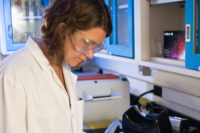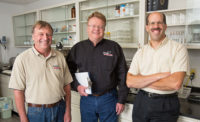Get on the right side of history

My wife is always right. She is always right for two reasons; for one she usually is, or two, she eventually is, for multiple reasons. With her, I try never to be on the wrong side of history. Some in the beef industry could well learn the lessons of my 22-plus years of marriage.
It is time for the beef industry to champion that, at a minimum, six non-O157:H7 shiga toxin-producing serotypes of E. coli (STECs)—O26, O45, O111, O121, O145 and O103—are “adulterants.” One way or another, the adulterant label is going to happen and happen soon, and the beef industry needs to embrace it.
E. coli O157:H7 has been considered by the FSIS to be an adulterant in beef since 1994 (particularly in ground beef)—the other six strains are not. Under 21 U.S.C. § 601 … (m), the Federal Meat Inspection Act (FMIA), the term “adulterated”:
“shall apply to any carcass, part thereof, meat or meat food product under one or more of the following circumstances: (1) if it bears or contains any poisonous or deleterious substance which may render it injurious to health; but in case the substance is not an added substance, such article shall not be considered adulterated under this clause if the quantity of such substance in or on such article does not ordinarily render it injurious to health; ...”
Frankly, it is hard to read the above and not think that the word “adulterated” does not apply to all serotypes of E. coli that cause human illness.
The FSIS stated mission renders it “responsible for ensuring that the nation’s commercial supply of meat, … products [are] safe, wholesome, and correctly labeled and packaged.” To promote its mission, FSIS has the power under the FMIA to, among other things, seek the recall of products that have been deemed “adulterated.” FSIS drastically shifted how it interpreted and enforced the FMIA in 1994 when, following the infamous Jack in the Box outbreak, the agency declared O157:H7 to be an “adulterant.” This marked a dramatic change from its previous stance that pathogens in raw beef were not “adulterants,” and were, in fact, “natural.”
That declaration was met with strong opposition from the beef industry, but the declaration was upheld. During the early part of this decade, however, it became readily apparent that O157:H7 was not the only deadly strain of E. coli. The CDC recognized this fact when, in 2000, it made all illness-causing strains of E. coli nationally reportable. The CDC subsequently referred to non-O157:H7 STECs as emerging pathogens that pose a significant health threat. Still, FSIS remained steadfast in its stance that O157:H7 is the only E. coli that should be deemed an adulterant.
So what’s wrong with FSIS’s position, and some in the beef industry, regarding non- O157:H7 strains? The simple answer is this: The people of this nation do not deserve another Jack in the Box-sized catastrophe as a pre-requisite for currently needed agency action. The scientific and medical communities have recognized the dangers of all illness-causing strains of E. coli, not just O157:H7. It is time for the beef industry to get on board the train before it leaves the station.
It is time to be on the right side of history. And, my wife would agree.
It is time for the beef industry to champion that, at a minimum, six non-O157:H7 shiga toxin-producing serotypes of E. coli (STECs)—O26, O45, O111, O121, O145 and O103—are “adulterants.” One way or another, the adulterant label is going to happen and happen soon, and the beef industry needs to embrace it.
E. coli O157:H7 has been considered by the FSIS to be an adulterant in beef since 1994 (particularly in ground beef)—the other six strains are not. Under 21 U.S.C. § 601 … (m), the Federal Meat Inspection Act (FMIA), the term “adulterated”:
“shall apply to any carcass, part thereof, meat or meat food product under one or more of the following circumstances: (1) if it bears or contains any poisonous or deleterious substance which may render it injurious to health; but in case the substance is not an added substance, such article shall not be considered adulterated under this clause if the quantity of such substance in or on such article does not ordinarily render it injurious to health; ...”
Frankly, it is hard to read the above and not think that the word “adulterated” does not apply to all serotypes of E. coli that cause human illness.
The FSIS stated mission renders it “responsible for ensuring that the nation’s commercial supply of meat, … products [are] safe, wholesome, and correctly labeled and packaged.” To promote its mission, FSIS has the power under the FMIA to, among other things, seek the recall of products that have been deemed “adulterated.” FSIS drastically shifted how it interpreted and enforced the FMIA in 1994 when, following the infamous Jack in the Box outbreak, the agency declared O157:H7 to be an “adulterant.” This marked a dramatic change from its previous stance that pathogens in raw beef were not “adulterants,” and were, in fact, “natural.”
That declaration was met with strong opposition from the beef industry, but the declaration was upheld. During the early part of this decade, however, it became readily apparent that O157:H7 was not the only deadly strain of E. coli. The CDC recognized this fact when, in 2000, it made all illness-causing strains of E. coli nationally reportable. The CDC subsequently referred to non-O157:H7 STECs as emerging pathogens that pose a significant health threat. Still, FSIS remained steadfast in its stance that O157:H7 is the only E. coli that should be deemed an adulterant.
So what’s wrong with FSIS’s position, and some in the beef industry, regarding non- O157:H7 strains? The simple answer is this: The people of this nation do not deserve another Jack in the Box-sized catastrophe as a pre-requisite for currently needed agency action. The scientific and medical communities have recognized the dangers of all illness-causing strains of E. coli, not just O157:H7. It is time for the beef industry to get on board the train before it leaves the station.
It is time to be on the right side of history. And, my wife would agree.
Looking for a reprint of this article?
From high-res PDFs to custom plaques, order your copy today!




